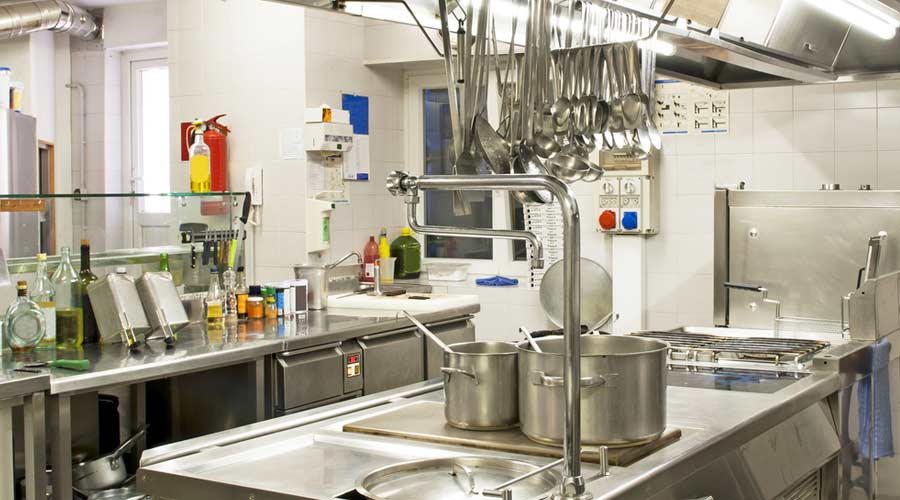Throughout the COVID-19 pandemic, healthcare facilities workers have been on the front lines, ensuring the safety of patients. While their battle hasn’t gone unnoticed, sometimes the toughest fights have been out of their control.
Since the beginning of 2022, there has been 10 major foodborne illness outbreaks in the United States, down from the 14 reported in 2021. While symptoms for these illnesses can include nausea, vomiting, stomach cramps and diarrhea, they can also be deadly. Each year, an estimated 9 million people get sick, 56,000 are hospitalized and 1,300 die of foodborne disease caused by known pathogens. Symptoms differ among people and the different types of illnesses.
“The most common foodborne illnesses in the U.S. are caused by Norovirus, Salmonella and E. coli, with the most fatalities being associated with Listeria and Salmonella,” says Elaine Black, director of food safety and public health with Ecolab. “The most common foods associated with illness are those that may not go through a cooking step directly before consumption, such as leafy greens, other fruits and vegetables, and items like sandwiches and deli salads. Chicken and processed chicken products are commonly associated with Salmonella. As with all other areas of the hospital, hand hygiene is an important component of infection prevention in healthcare food safety programs.”
Food safety must remain at the top of mind in hospitals and other healthcare facilities. Healthcare facilities’ kitchens have the added stress of providing vital nourishment to immunocompromised individuals, so if a mistake is made, it can risk further illness, extended length of stay or even causing death. Food safety programs should be comprehensive in scope and should consider how meals are produced, prepped and where ingredients are stored. Still, managers should re-evaluate food safety plans every year or when significant changes are made to suppliers or menus or if a foodborne illness event occurs.
“Understanding the nature and risk of common foodborne pathogens is the first step in prevention of foodborne illness,” Black says. “Layering on knowledge of the common risk factors associated with sourcing, receiving, storage, preparation and serving of food builds the foundation for a strong food safety program. Building a great food safety culture demands commitment from all those involved in the processes of ensuring patients are nourished in a safe and healthy way. A healthy food safety culture is one where all employees understand the risks of making a patient ill and their part in preventing it and ensures that they will do what is right even when no one is watching.”
According to a report by BSI, hospitals in South Africa outsource food services. Still, this does not remove any liability from the healthcare facility. It is up to managers to communicate regularly with suppliers to ensure they are complying with legal requirements and appropriate food safety management standards. Regular audits between hospital management and food preparation facilities can ensure food is handled safely, as these protocols help prevent the sick from getting sicker.
“Supplier relationships are key to providing safe food to patients,” Black says. “Accreditation and third party audits of suppliers can give some peace of mind that they are adhering to all food safety regulatory requirements. Ask to see their inspections or audit data, and if possible, tour their locations. Setting up specifications for the delivery of your orders can increase the safety of your ingredient and product supply. Temperature checks, visual inspection and documentation review are all critical when receiving goods. Open and transparent communication with suppliers and vendors is key during recalls of products due to contamination, undeclared allergens or other issues that put your patients at risk. This will allow you to remove the affected products as soon as possible.”
It is essential that healthcare facilities managers have a food safety plan in place. It helps keep patients and visitors safe, but it also helps staff. According to the BSI report, sick staff members can cause a major disruption to services, ultimately impacting patient experience. Severe cases of foodborne illnesses can lead to the closure of wards, causing the entity to lose money, limit the amount of care patients can receive and put more strain on workers. If a healthcare facility experiences a foodborne illness outbreak, it might take several months for services to return to normal.
“Is it sometimes hard to convince management to invest in food safety,” Black says. “Serving safe meals day in and day out rarely makes a headline, but an illness or death can grab media attention very quickly. Lean on your vendor partners and suppliers to provide expertise in digital tools, audits, ingredient quality and safety, pest control and sanitation so you can consistently deliver safe and nutritious food to those who need it to fuel their healing process.”
Mackenna Moralez is the associate editor with the facilities market.

 UF Health Hospitals Rely on Green Globes to Realize Their Full Potential
UF Health Hospitals Rely on Green Globes to Realize Their Full Potential How Healthcare Facilities Can Be Truly Disaster-Resilient
How Healthcare Facilities Can Be Truly Disaster-Resilient TriasMD Breaks Ground on DISC Surgery Center for San Fernando Valley
TriasMD Breaks Ground on DISC Surgery Center for San Fernando Valley Bigfork Valley Hospital Falls Victim to Data Breach
Bigfork Valley Hospital Falls Victim to Data Breach AI-Driven Facilities: Strategic Planning and Cost Management
AI-Driven Facilities: Strategic Planning and Cost Management